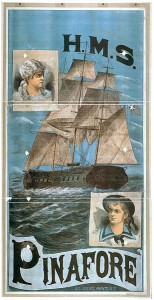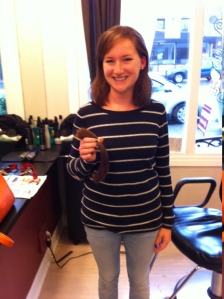
This week on the Mid-Week Beat, we pay tribute to the art of musical theater because, let’s face it, who doesn’t love a musical? Okay, maybe some of you don’t but even the most ardent detractors of the art form will admit a love for at least one musical, be it West Side Story or Hedwig and the Angry Inch.
We can trace the roots of “musical theater” back to ancient Greece, where music and dance was incorporated into stage comedies and tragedies, but the modern Western “musical” as we know them, gained prominence in the late 19th Century with the basic structural elements established by the works of Gilbert and Sullivan in Britain and by Harrigan and Hart in America. The first modern “musical,” which is generally defined as a theatrical work that is enhanced by adding dance and original music to help tell the story, was The Black Crook, which debuted in New York on September 2, 1866. The show was five and half hours long and ran for a record-breaking 474 performances.
That record was broken in the late 1800’s by a series of long-running, family-friendly comic opera hits by Gilbert and Sullivan including 1878’s H.M.S. Pinafore and 1885’s The Mikado. Gilbert and Sullivan revolutionized musical theater by creating examples of how to better integrate music into theatrical pieces so that the lyrics and dialogue advance the story and make it more coherent. Their works would influence many composers of subsequent musicals by the likes of Ira Gershwin, Irving Berlin, Oscar Hammerstein II and Andrew Lloyd Webber.
Gilbert and Sullivan including 1878’s H.M.S. Pinafore and 1885’s The Mikado. Gilbert and Sullivan revolutionized musical theater by creating examples of how to better integrate music into theatrical pieces so that the lyrics and dialogue advance the story and make it more coherent. Their works would influence many composers of subsequent musicals by the likes of Ira Gershwin, Irving Berlin, Oscar Hammerstein II and Andrew Lloyd Webber.
American composers like George and Ira Gershwin, Irivng Berlin and Rodgers and Hart would eventually take away Britain’s dominance in the musical theater world by replacing the operatic and theatrical styles of the 19th century with a modern approach more fitting to 20th century sensibilities. They began to incorporate popular musical styles like ragtime and jazz and, by the 1920s, the focus began to shift away from the plot and more towards star actors or actresses, big musical numbers and popular songs. Many of today’s “standards” were written during this time period and the careers of early Broadway legends like Fred Astaire were launched.
Read More…



 Arts
Arts Comedy
Comedy Event Tips
Event Tips Film
Film Food & Drink
Food & Drink Good Causes
Good Causes Music
Music News
News Radio
Radio Roller Derby
Roller Derby